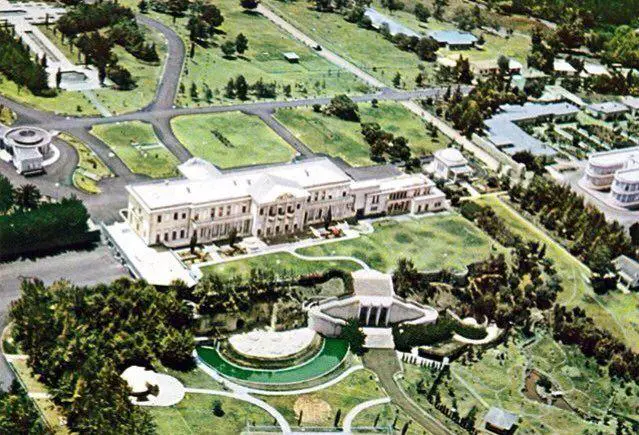The Chaka Project, also known as the “forest project” or the initiative to build a new national palace, has been the talk of the town in recent months. As the second biggest public endeavour in Ethiopia, after the Grand Ethiopian Renaissance Dam, this project is ambitious, controversial, and significant for the nation’s future. Here are some key facts to shed light on the intricate tapestry of the Chaka Project:
1. Scope of the project
Located in Yeka Sub-City on the Yeka hill of Addis Ababa City Administration, the Chaka Project sprawls across a massive 503 hectares of land. This makes it grander in size than some of the world’s most renowned landmarks, including Windsor (UK), Versailles (France), the White House (USA), the Kremlin (Russia), and the Forbidden City (China) combined.
2. Construction and infrastructure
The project includes the construction of the main national palace, the luxury ‘Sky View Hotel’, road networks stretching over 29 km, and three artificial lakes. The road construction alone, managed by the Ethiopian Roads Administration, is estimated to cost 15 billion birrs.
3. Financials
Initial speculations put the cost of the project at 49 billion birr. However, during an address at the House of Peoples Representatives, Prime Minister Abiy Ahmed revealed that the endeavour is a part of the ‘Smart City’ Development and could cost between 300 and 400 billion birrs. Contrary voices in media argue the potential cost could be over $10 billion, which is substantial for a nation like Ethiopia.
4. Participating contractors
Several contractors are involved in the realisation of the Chaka Project. The state-owned Ethiopian Construction Works Corporation is responsible for the main palace, the Governmental Construction Company of China for the ‘Sky View Hotel’, the Ethiopian Roads Administration for the road networks, and ‘e-tollo’ for the three artificial lakes.
5. Relocation and heritage concerns
The implementation of the project necessitated the eviction of numerous residents from the area. There have been reports of thousands of houses being demolished for the construction of the new palace. Critics argue that apart from forced relocations, the Chaka Project has led to the destruction of significant portions of Addis Ababa’s heritage, including around 316 historic buildings.
6. Abiy’s larger vision
Since his election, Prime Minister Abiy Ahmed has launched several mega-projects. These include the Unity Park Project and the Mesqel Square Project, which combined cost over 7.5 billion birr. The Chaka Project is the latest in a series of initiatives spearheaded by the Prime Minister, which some view as a step towards modernisation and others as a departure from Ethiopia’s rich heritage.
7. International funding
There’s speculation about international involvement in funding the Chaka Project. Reports suggest that the UAE government might contribute to the project’s budget.
8. Historical significance
Several of Addis Ababa’s historic sites and palaces are being repurposed as part of the modernisation endeavours. For instance, the Menelik Palace is set to be transformed into a national museum.
9. Public perception and controversy
While some view the Chaka Project as a symbol of progress and development, critics argue that it’s a misuse of public funds, especially in a country grappling with economic and social challenges. There have also been concerns about transparency in the allocation and use of funds for the project.
READ ALSO: Chaka Project, second biggest public project in Ethiopia, underway
10. A comparison
The only project that surpasses the Chaka Project in terms of scale and ambition in Ethiopia is the Grand Ethiopian Renaissance Dam, which has consumed over 130 billion birr so far.
The Chaka Project stands as a testament to Ethiopia’s ambitions and the direction it envisions for its future. However, the project also brings to light the complexities of development, heritage conservation, and governance in one of Africa’s most diverse nations.

